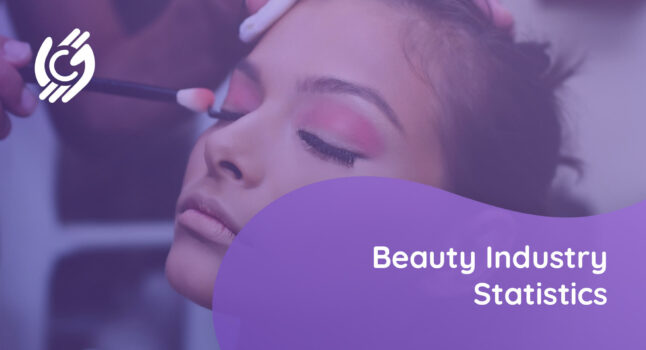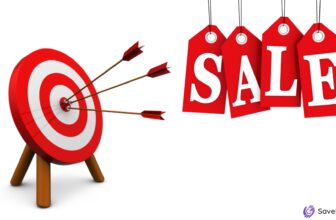The human need to look and feel their best has always provided a lucrative branch for business, and not even the global financial crisis managed to significantly reduce the growth and expansion of cosmetics as the famous lipstick effect took over. When in crisis, put on the red lipstick and keep moving, it’s been said.
Beauty industry statistics show that the new generations are taking more interest and assuming an active role in the beauty industry with the rise of influencer marketing over the last decade. With it, new segments are opening in this 565 billion industry, and we are taking a closer look at the statistics, facts, and trends surrounding it.
Top 8 Cosmetic Industry Stats and Facts in 2022
- The global cosmetic industry is currently worth around 565 billion dollars.
- By 2025, the global beauty and personal care market size will reach $716 billion.
- 67% of all consumers use makeup products.
- Online sales recorded a 23.6% growth and their number sits at over $5 billion.
- An average American consumer spends almost $200 a year on basic cosmetics.
- 57% of women in the United States prefer all-natural skincare.
- Predictions show that the global cosmetic market could have a 20% to 30% drop because of the pandemic.
- In the United States, the beauty services sector employs over 670,000 people.
Overview of the General Cosmetic Industry Statistics
1. The latest cosmetic industry statistics put the total value of the beauty industry at around $565 billion in 2022.
(Statista, Mordor Intelligence)
The term beauty industry encompasses several different industries, from skincare to haircare, fragrances, hygiene, and color cosmetics. The leader, the industry’s most profitable branch, taking up to 39% of the market, is skincare.
Statistics for the hair and beauty industry record that, while the makeup segment is experiencing difficulties, hair care remained strong even during the pandemic, with projected growth at a CAGR of 3.35% between 2020 and 2025.
2. Cosmetics industry analysis shows that a 20% to 30% drop was predicted for 2020.
(McKinsey, NPD)
The Covid-19 pandemic stunted the growth of the beauty market in 2020. This was also visible in the US prestige beauty industry as its sales declined by 19%.
However, some categories, like nail care, boomed as people resorted to at-home manicures.
3. Hairdressing industry statistics also show that the market for hair, skin, and nail salons decreased by at least 13% in 2020.
(Statista, IBISWorld)
The coronavirus crisis forced businessowners to close their salons or reduce their workflow around the world. According to IBISWorld, hair salons lost around 7% in revenue compared to previous years. This impacted a significant number of hairdressers and their customers, as the estimated number of hair salons in 2020 was around 1,000,000.
4. The global cosmetics market size was estimated at $254.08 billion in 2021.
(Grand View Research, Technavio)
The size of the global cosmetics market in the future is somewhat a theme for speculation as numbers seem to fluctuate with different beauty industry analysis. According to Technavio’s report, the skincare market will gain 38 billion in size between 2020 and 2024, growing by 4.2%. Other projections predict a CAGR of 3.6% by 2027.
5. Reports on the beauty industry’s growth show that by 2025 the combined global beauty and personal care market is forecasted to exceed $750 billion.
(Statista, Grand View Research)
The largest skincare market in the world by health and beauty industry statistics, the U.S was valued at $39.2 Billion in 2020. The cosmetic industry revenue in the United States was upheld by its ecommerce segment throughout the year.
6. The mass-market segment accounts for 72% of the total cosmetic market.
(Statista, Toptal)
Statistics worldwide show that usually, the industry follows the traditional divide to premium and general, mass market, within the ratio of 1:3, with the premium segment taking up just under 30% of the cosmetic industry market share, while mass-market holds 72%.
7. The beauty industry growth rate is most visible in the online sector.
(Allied Market Research, Statista, Digital Commerce 360)
Cosmetic industry growth is especially visible in the online segment with online sales for beauty companies growing faster than the rest of online commerce. Cosmetic industry stats show that this category recorded growth while others struggled in 2020, as the online beauty, health, and personal care category reached a revenue of $62.62 billion in 2020.
Beauty industry growth in online sales was a success, with its year-on-year growth rate in 2020 reaching 25% in the first half of the year.
Makeup and Skincare Cosmetics Industry Statistics
8. Makeup industry statistics show that 22% of women changed their skincare routine due to the pandemic.
(NPD)
Makeup statistics note that, usually, 41% of consumers, age 30 to 59 in the U.S., report wearing makeup on a daily basis, while 25% use makeup products several times a week. However, in 2020, 71% of women in the US reported wearing less makeup. On the other hand, 40% of skincare users reported using more facial care products.
So, in 2020, there was more focus on care and prevention, while sales for most makeup products decreased.
9. Makeup industry stats show that the makeup industry revenue reached around $75.1 billion in 2020.
(Common Thread Collective, Statista)
The makeup industry worth is expected to reach over $80 billion in 2022. Cosmetics industry revenues will vary depending on the segment, and makeup is definitely adapting to the new circumstances. For example, while lipstick sales fell, magnetic lashes became a trend at just the right time, growing by an insane 1000% in 2020.
10. The anti-aging market was estimated at 58.5 billion in 2020.
(Statista)
Skincare industry statistics mark a shift from older consumers to younger, as the consumer base rapidly expands with the new generations entering the workforce and becoming financially stable. The use of skincare is no longer reserved for the anti-aging segment and even that is moving down the consumer age scale as more young people start delaying signs of aging significantly earlier than the previous generations did.
11. 57% of women in America say it is important for them to use natural products, and the natural products segment records faster growth in the last 5 years.
(Statista)
Another shift in perspective points out to the increase of interest for organic and natural products in consumers. Cosmetics industry statistics reveal that manufacturers concentrate on organic and innovative products that will offer environmentally friendly skincare and toiletries. Locally made products or products made from locally grown ingredients, show the best sales results as it is no longer about the effect on the skin, but rather about the full well-being experience that the modern consumer asks for.
12. Social media marketing is rapidly replacing conventional marketing in the makeup industry.
(Toptal)
Along with the increase in numbers, the new consumer demographic brings along change as the brands are navigating towards means of advertising and presentation that will appeal to them. Vlogging and influencer marketing have forever changed the way skincare products and makeup are offered and consumed.
Moving Forward – Beauty Industry Statistics and Trends
13. The modern consumer wants a clean conscience, too.
(Grand View Research)
As consumer awareness and attention changes over time, new cosmetics industry trends emerge both in production and advertising.
Informed and connected, today’s market seeks products that are less harmful, more natural, organic, overall environmentally conscious, and safe.
There is a demand for products without phthalates, parabens and aluminum salts and the fluctuations in the supply of adequate raw materials are a constant challenge for the industry.
14. Cosmetic industry trends wake up to include a rising demographic of underserved audiences.
(CB Insights)
Over $1.3 trillion is reported to be spent on makeup by people of color.
70% of consumers older than 40 report lack of products for perimenopausal and menopausal women. Children’s cosmetics saw nearly 9% growth during the last year and the segment is growing. New demographic market segments that are witnessing expansion are products for people of color, men, children, and older generations, respectively, as those segments have seen significant underrepresentation of users over the years.
15. Beauty industry trends follow the tech-savvy customer’s attention.
(CB Insights)
The introduction of beauty apps and devices are a brand new opportunity for the beauty industry market size to jump up significantly, with brands moving forward from simple beauty and makeup apps to a whole new range of beauty systems. Beauty industry market statistics show leading corporations are building connected personalized beauty systems that use modern tech to track anything from sun damage to skin hydration levels.
The Beauty Industry Expands and Discovers New Territories
Influencer marketing on social media platforms changed not only advertising but also the way people engage with brands and their products. Traditional advertising is being left behind by the beauty industry following trends and directions in which the customer attention shifts.
The modern consumer is eco-conscious and wants inclusive products. Drawn to the new technologies, they are open to exploring the use of apps and beauty systems in their daily cosmetic routines.
Beauty industry statistics reveal that the consumers’ values are changing, needs are expanding, and expectations are rising within all customer demographics. The manufacturers, conglomerates and small scale alike, are upgrading and reinventing ways to answer the demands.
FAQ
How Much Is the Beauty Industry Worth?
The beauty industry worth was $511 billion in 2021, and it is on a rapid trajectory upward as the consumers rise in numbers with the constant influx of younger generations. New consumers are entering the market driven by the latest trends at an ever younger age each year and the underrepresented categories are being included and closing the gap as well.
Is the Beauty Industry Growing?
Some of the beauty industry analyses indicate that the global beauty and personal care market is expected to exceed $750 billion by the year 2025.
In recent years the beauty industry saw a growth of 5.5% from 2017, and future growth is speculated to be anywhere from 3.35% CAGR to 4.2% in the years 2020 to 2027.
However, some reports estimate a possible continuing decrease in some segments of the beauty industry, especially in brick-and-mortar stores. Some scenarios predict that the beauty industry could return to its 2019 level only in the first quarter of 2022.
How Many People Are in the Beauty Industry?
In the United States, the beauty services sector employs over 670,000 people.
Worldwide, just the service segment of the beauty industry employs over 1 million workers.
L’Oreal alone employed 87,907 people up until 2019, worldwide.
How Big Is the Beauty Industry?
Beauty industry statistics show the industry was worth $93.5 billion in the US market. This is an increase of $74.7 billion from the year before.
The global beauty industry is a very condensed one, with the 7 major conglomerates holding under them the majority of big-name brands. By size and market share, these are Estée Lauder Companies, L’Oréal, Unilever, Procter&Gamble, Shiseido, Johnson&Johnson, and Coty, respectively, owning just under 200 major cosmetics brands between them. Combined these companies employ over a million workers worldwide, with 1 million people working in the service section alone.
How Much Is the Cosmetic Industry Worth?
The recorded beauty industry revenue in the cosmetics segment in the United States was $62.46 billion in 2021.
The market is expected to grow annually by 3.5% to 7% CAGR in the years from 2020 to 2025.
Looking at the total population figures, revenues of an average of $53.23 per person were spent in 2021 in the United States.
Sources:







![How to Get Free Clothes From Shein? [2024 Guide]](https://savemycent.com/wp-content/uploads/2023/09/How-to-Get-Free-Clothes-From-Shein-336x220.png)
